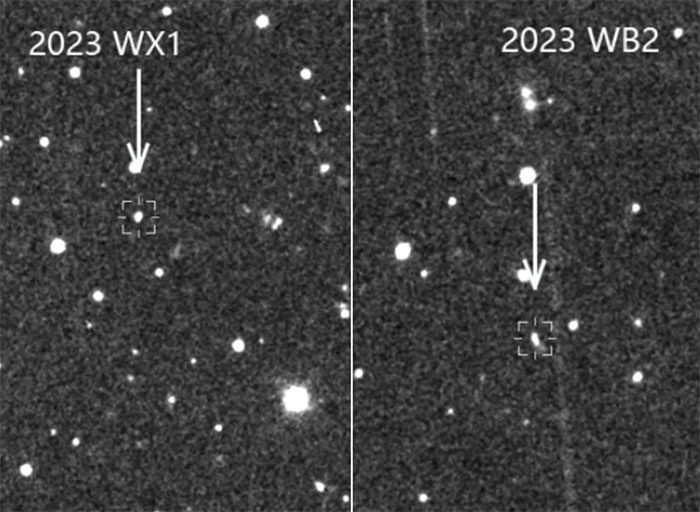The Wide Field Survey Telescope (WFST) of China, capable of surveying the entire sky from the Northern Hemisphere, has discovered two near-Earth active asteroids.

Images of the two asteroids 2023 WX1 and 2023 WB2 captured by the Wide Field Survey Telescope (WFST).
These celestial bodies were first detected on November 18 and were named 2023 WX1 and 2023 WB2 by the International Astronomical Union’s Minor Planet Center. They are the first near-Earth asteroids discovered through WFST.
According to astronomers, the apparent magnitudes of the two asteroids at the time of discovery were 20.8 and 21.0, with their apparent motion speeds being 0.513 degrees/day and 1.006 degrees/day, respectively.
After collecting data from various observatories, scientists have determined the initial orbits of 2023 WX1 and 2023 WB2, which are classified as near-Earth asteroids of the Apollo and Amor types. With an estimated diameter of 170 meters, 2023 WX1 is classified as a potentially hazardous asteroid due to its “minimum orbit intersection distance from Earth being 0.0416 astronomical units,” equivalent to 6.22 million kilometers.
With a diameter of 2.5 meters, the WFST is currently the largest time-domain survey facility in the Northern Hemisphere. It has been developed by the University of Science and Technology of China and the Purple Mountain Observatory of the Chinese Academy of Sciences and has been operational since September.
This telescope can help scientists monitor astronomical events related to planetary movements and conduct astronomical observational research. One of WFST’s main research objectives is to survey objects within the Solar System.




















































